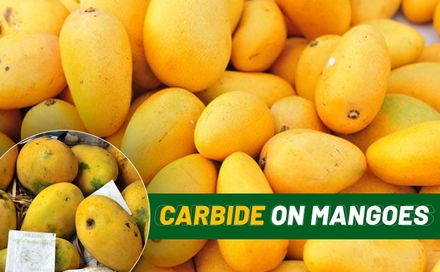
How to Identify Carbide Ripened Mangoes
When Calcium carbide comes in contact with the raw mangoes, it ripens up the mango. This chemical ingredient turns the fruit into a bright yellow or orange color fruit. However, the taste of carbide ripened mangoes might not be as similar as that of organically ripened one. Also, this could affect the health in a serious way and thus there’s a great demand for the organically grown mangoes in Indian markets. If you too want to get your hands on farm fresh mangoes which are extra sweet and safe to eat, then order them on AamWalla.com. The site not only offers good quality mangoes but also sells them for a reasonable price tag. Here’s everything you need to know how to identify the chemically ripened mangoes.
How chemical solutions are used for the ripening process of Mangoes?
Ethylene gas, acetylene gas liberated from calcium carbide, and ethephon are some of the chemical ingredients used for boosting up the ripening process of the mangoes at commercial vendors. The calcium carbide when comes in contact with raw mango, reacts to the moisture content in them. This response produces the acetylene gas (the effects are somewhat similar to natural ethylene gas), which is naturally used by the mangoes for ripening. If the mangoes are ripened before their time or harsh chemicals are used in speeding up the ripening process, then these types might not be healthy for eating. Alongside affecting the natural nutritional composition of the mango, these chemical ingredients also make it harmful for human consumption. Thus it is crucial to know what type of mangoes you consume and how they make their way to your kitchen.
Must Read: Where You Can Find The Best Organic Alphonso Mangoes
Ways of identifying carbide ripened mangoes:
- Observe the appearance of the mango and see if there are traces of white or gray colored powder. If you find these traces, then the mango is chemically ripped
- Check out the color of the mango (might vary as per the variety). But if there’s something fishy in its color, then there are chances of it being chemically ripened
- Artificially ripened mangoes sometimes also have green patches and they don’t appear natural. These patches will be distinguishable from the yellow ones
- Chemically ripened mangoes might look completely ripped from the outside, however, it may be a little raw from the inside. The sweetness might also be less
- Upon tasting the chemically ripened mangoes, one can sense about them being artificially ripened. There might be a sense of slight burning in the mouth after consuming these type of mangoes
- Carbide ripened mangoes do not have extra juice content in them and the pulp might also appear little different
For similar updates, stay hooked on this space.
